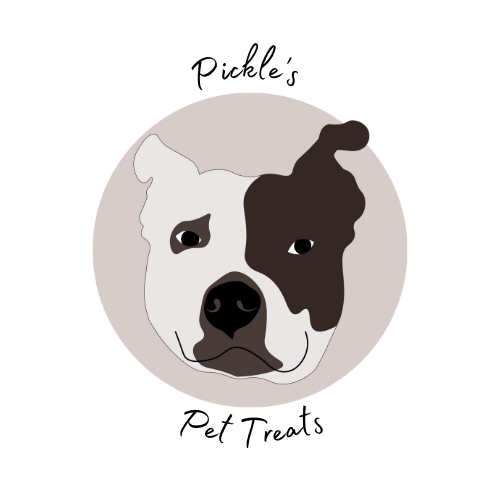Dermatitis is one of the most common issues that I have come across with dogs, and I often get asked how to best provide them with relief. There are many different causes, so it is important to find exactly what is making your dog itchy to be able to provide the correct treatment. Most often you will need to take your dog to be evaluated by a vet for diagnostics and medication.
Most common causes of canine dermatitis:
- Ectoparasites such as fleas, ticks, sarcoptic mange (scabies) & mites. Some dogs (and cats) can be allergic to flea saliva, which causes flea allergic dermatitis and can lead to patches of hair-loss on the face and base of tail.
- Inhalant allergies (Atopy) caused by tree, grass & weed pollens, mildew & molds, and also dust-mites. Pollen generally causes seasonal allergies, however household inhalants can cause issues year-round, especially in humid climates. These allergens generally cause itchy skin (pruritus) and commonly also ear infections.
- Food allergies (an immune response) & intolerances (difficult digestion) to the protein or carbohydrate in your dog’s diet. It is important to recognise the difference between allergies and intolerances.The most common food allergens in dogs are beef, dairy, wheat, eggs, chicken, lamb & soy.
- Contact allergies, which are commonly caused by grasses & succulent grass covers, topical antibiotics, propylene glycol in topical products, chlorhexidine, flea products, carpet deodorisers and some metals. These can cause severe itching (some dogs may drag their belly across the ground), a red rash that appears 4 to 72 hours after contact, and often self-trauma. Chronic inflammation can cause the skin to become thicker and darker.
- Bacterial hypersensitivity (or Staph Dermatitis) is caused by a group of bacteria called Staphylococcus. These bacteria naturally live on the skin of dogs, and as long as the skin is healthy they are not an issue. However if the skin becomes irritated, the bacteria can multiply rapidly, causing Staphylococcal pyoderma. If infected, your dog may scratch, lick & chew the affected area. Any skin condition that causes itching may lead to this type of infection (secondary infection).
- Malassezia dermatitis (yeast dermatitis) is very common in wet or humid weather. It is caused by an overgrowth of the fungus Malassezia pachydermatis which normally resides on dog’s skin in small amounts, but an overgrowth can cause dermatitis (skin inflammation). Common signs are itching & redness, a musty, bread-like smell, crusty skin, thickening & darker skin, chronic otitis (ear infections).
How to identify & treat canine dermatitis:
In most cases, a Veterinarian will need to diagnose your pets condition and prescribe medication. They may perform blood tests, skin scrapings, or allergy tests.
Pets with severe allergies may also have a secondary skin infection, which will need to be diagnosed by a vet and prescribed oral antibiotics.
Ectoparasites:
- Dogs should be given monthly, 3-monthly or 6-monthly flea and tick preventative such as Nexgard, Bravecto (Except for Chihuahuas, Boxers and other breeds prone to epilepsy), Simparica, or Advantix.
- In heavily affected areas, a multi-modal approach can be used by utilising more than one type of preventative. Other products to add include tick collars such as Seresto, insect shield bandannas, and ultrasonic devices.
- Dogs should also be given a 3-monthly internal parasite preventative that contains Praziquantel for tapeworms, such as Milbemax.
- Cats should have a fortnightly, monthly or 2-monthly flea and tick preventative applied externally such as Bravecto Plus or Frontline spray. Unfortunately there are no oral options for cats, and limited options for the prevention of paralysis ticks.
- Other options for cats include Seresto collars, insect shield bandannas, and ultrasonic devices.
- It is important to also treat the environment your pet lives in – if indoors, you will need to vacuum, launder bedding in hot water, mop with hot water, and steam soft furnishings and carpets, or set off bug bombs. If using bug bombs, ensure you follow the safety directions on the packaging. If your pet lives outdoors, you will need to was their bedding, spray kennels with flea-repellant, and ensure grass is kept short. You may need to call pest control to have the yard sprayed. These sprays are generally safe to use with pets around, but ensure you ask.
Inhalant & contact allergies:
- A veterinarian may prescribe corticosteroids, however long-term use is not recommended due to the risk of kidney damage. Overuse can cause Cushing’s disease in extreme cases.
- Cytopoint injections may also be given by a Vet, which blocks signals that trigger itchiness and can provide relief within a day. This is generally given once every 4 to 8 weeks, depending on how itchy your dog is.
- Apoquel may be considered by your Vet, however the cost can be quite high, especially with larger dogs.
- Supplements can be given alongside medications, or on their own as an alternative to medication. Some popular skin support supplements include:
- Antinol Rapid, made from NZ green-lipped mussels & krill oil
- Dermoscent Essential 6 spot-on
Food allergies:
- A vet may perform a skin or blood test to identify the problem allergen, however some of these are inaccurate. A food elimination diet is the best way to identify the allergen and may be trialled at home by feeding one protein at a time. It’s still best to do this under veterinary supervision for best results. There are a few types of elimination diet to choose from:
- Novel diets use proteins that your dog has never, or rarely had in the past. A great pre-made food for this diet is Prime 100 SPD.
- Hydrolysed diets contain a diet that has been broken down by enzymes to be so small that in theory, should not stimulate the immune system. Popular foods include Hills and Royal Canin.
- Home-made diets can also be used, however it is important to ensure diets are complete & balanced.
Staph dermatitis:
- As this will need to be diagnosed by a vet, it will also require a vet to prescribe an oral antibiotic.
- The vet may also prescribe a topical ointment and recommend the use of an antibacterial shampoo such as Malaseb. With Staph hypersensitivity, a series of injections of staphylococcal bacterin (tiny amounts of killed staphylococcal bacteria) are given to achieve long-term control. This is used to train the immune system to not over-react to the bacteria.
- It is essential to stop the cycle of itching so that treatment is effective. This includes identifying and treating the cause of the itching that has caused the secondary staph infection.
Malassezia dermatitis:
- Generally a vet will need to diagnose yeast infections by looking at a skin scraping or sticky tape test under a microscope.
- The main treatment for yeast dermatitis is anti-fungal medicated shampoos containing chlorhexidine, miconazole, or ketoconazole, such as Malaseb. Dogs with very greasy coats will need an initial degreasing bath to allow the medicated shampoo to be best absorbed.
- In severe, chronic, or persistent infections, the use of oral anti-fungals such as ketoconazole, itraconazole, or fluconazole may be prescribed by a vet.
- Many dogs with yeast dermatitis also have a secondary skin infection (pyoderma) and will require oral antibiotics for 4 to 12 weeks.

